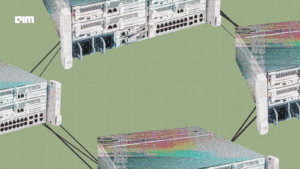Enterprise software has reached an inflection point. For decades, organizations have built their digital infrastructure around SAAS platforms, adding artificial intelligence capabilities as an afterthought layering AI features onto existing systems rather than reimagining how work gets done. This approach, while familiar, increasingly constrains businesses seeking adaptability, personalization, and competitive advantage.
The idea of an AI-first enterprise is changing how businesses use technology. Instead of using strict software that makes people follow fixed rules, AI systems can adjust to what users really need. But shifting to this approach isn’t easy, companies need to deal with issues like data quality, regulations, employee training, and proving return on investment.
At CDO Vision Boston, industry leaders shared their experiences at a panel discussion with AI-first approaches both the opportunities they see and the real-world obstacles they’re working through. The conversation was moderated by Himanshu Jain, AVP, AI & Data Science at CVS Health and the panel featured Jürgen Weichenbergerr Head of AI, Strategy & Innovation at Schneider Electric, Trang Nguyen VP of Data Science at Prudential, Dave Murray – Head of Enterprise AI and Data Management at Welch, Limor Gultchin VP of AI/ML at Berkshire Partners.
AI-first approaches offer four major benefits: enhanced customer experience through personalization, boosted employee productivity through automation and analytics, faster speed to value by turning ideas into action quickly, and greater flexibility and collaboration, empowering employees to innovate across the organization.
Customer-First
The future of enterprise solutions lies in systems that adapt to the user, not the reverse. AI-first enterprise software is about putting customers at the center of how technology works. Traditional systems make customers adapt to the software’s rules and limitations. AI-first platforms work the other way around; they adapt to what customers actually need and how they prefer to work.
This change creates real benefits. Customers get more personalized experiences instead of one-size-fits-all solutions. Companies can build and improve products faster, cutting development time from months to weeks. When customers request new features or report problems, AI-first systems can respond more quickly than traditional software development cycles allow.
The technology also improves accuracy and reduces errors in everyday tasks. This matters because mistakes frustrate customers and damage trust. When AI handles routine work correctly, customers can focus on more important activities.
However, this customer focus requires careful governance. Companies must protect customer data, ensure AI systems work reliably, and be transparent about what the technology can and cannot do.
Employee Productivity
The shift to AI-first systems signals a new kind of workplace, where routine tasks fade into the background making room for creativity and problem-solving.. The automation benefits are immediate and tangible development cycles that once took months now happen in weeks, and routine administrative work gets handled automatically with fewer errors.
The productivity gains, however, go deeper than automation. AI democratizes analytics and experimentation across the organization. Employees at all levels can now test ideas, analyze data, and propose solutions without waiting for specialized IT support. This bottom-up innovation taps into the knowledge of people closest to actual problems and opportunities.
Speed to Value
Speed is the new competitive edge and AI-first systems deliver it. Development cycles that previously took six to nine months now happen in two to three months, meaning businesses can respond to market changes and customer needs much faster. This speed extends beyond just building software, it transforms how quickly companies can experiment with new ideas, test solutions, and fix problems.
Teams can iterate rapidly, trying multiple approaches in the time it used to take for one traditional project cycle. The compound effect is significant: faster bug fixes, quicker feature releases, and more responsive customer service all contribute to better business outcomes and stronger competitive positioning.
Flexibility & Innovation
Traditionally, employees spotted problems but lacked the tools to solve them. With AI-first platforms, that barrier begins to disappear. AI-first platforms fundamentally transform organizational innovation by democratizing creative problem-solving across all employee levels. Rather than relying on traditional top-down mandates, these systems enable bottom-up experimentation where frontline workers become active innovators, directly addressing challenges they encounter daily.
The widespread accessibility of analytics and AI tools creates a culture of continuous experimentation, allowing any employee to test and validate ideas with unprecedented speed and feedback. This democratization breaks down traditional hierarchical barriers to innovation, giving teams the flexibility to pivot rapidly when approaches aren’t working, rather than waiting for lengthy approval cycles. Most significantly, AI-first adoption cultivates an entrepreneurial mindset within large organizations, where the technology serves not merely as a productivity enhancer but as a catalyst for unlocking imagination and creative thinking.
Roadblocks to AI-First Enterprise Implementation
The transition to AI-first enterprise systems reveals a complex web of interconnected challenges that extend far beyond technical capabilities. Data accessibility remains the fundamental barrier, with organizational silos preventing the free flow of information essential for AI systems. Even when data exists, establishing proper governance frameworks becomes critical without oversight, problematic use cases slip through and erode organizational trust in AI initiatives. Regulatory compliance adds another layer of complexity, as enterprises must navigate tightening frameworks like the EU AI Act while addressing ethical concerns around bias and explainability.
The volatile nature of AI technology creates additional hesitation among decision-makers. Rapid tool evolution means today’s cutting-edge solutions may become obsolete within months, making enterprises reluctant to commit substantial resources to platforms with uncertain longevity. AI agents, despite their promise, remain too immature for reliable enterprise deployment.
Perhaps change management emerges as the dominant challenge, consuming approximately 70% of implementation effort according to industry practitioners. Employees require extensive support to adapt workflows and build trust in AI systems. Without successful cultural adoption, even technically superior solutions fail at the implementation stage. This human element is compounded by ROI measurement difficulties traditional financial frameworks struggle to capture AI’s intangible productivity gains, creating boardroom skepticism that stalls strategic investments.
ROI & Adoption Strategies
The “build fast or build right” dilemma defines AI adoption strategies across enterprises today. Organizations wrestle with a fundamental choice between pursuing immediate AI wins versus comprehensive system transformation. The quick wins approach advocates for targeted implementations that build organizational confidence and momentum. These smaller-scale projects help risk-averse organizations demonstrate AI’s value while minimizing disruption to existing workflows. However, this strategy risks creating “quick win fatigue” a pattern where organizations achieve short-term ROI recovery without generating sustainable value or competitive advantage.
The alternative perspective emphasizes long-term architectural redesign, focusing on five-year value creation rather than immediate returns. This approach integrates AI into core business processes, creating lasting transformation but requiring significant upfront investment and organizational commitment. A balanced view suggests ROI clarity emerges most readily in areas with explicit cost structures, such as report generation or routine analysis tasks, where human labor can be directly measured against automated alternatives.
Future Outlook
The promise of autonomous business operations looms on the horizon, yet the path forward remains uncertain. The enterprise landscape stands at an inflection point where agent-based systems could fundamentally reshape how businesses operate. While optimists envision seamless A2A (Agent-to-Agent) ecosystems enabling unprecedented interoperability, skeptics question whether current AI agents possess the reliability needed for mission-critical enterprise deployment. This tension reflects broader uncertainty about AI’s readiness for large-scale transformation.
Three critical factors will determine success in this transition. Strategic use case selection separates winners from those trapped in proof-of-concept purgatory. Strong governance frameworks ensure AI implementations create sustainable value rather than accumulated technical debt. Most importantly, thoughtful change management transforms AI from a disruptive force into an organizational capability.
The enterprises that master this trinity, picking the right battles, establishing proper guardrails, and bringing people along the journey will extract genuine competitive advantage from AI-first approaches. Those that don’t risk expensive experimentation with minimal lasting impact.










